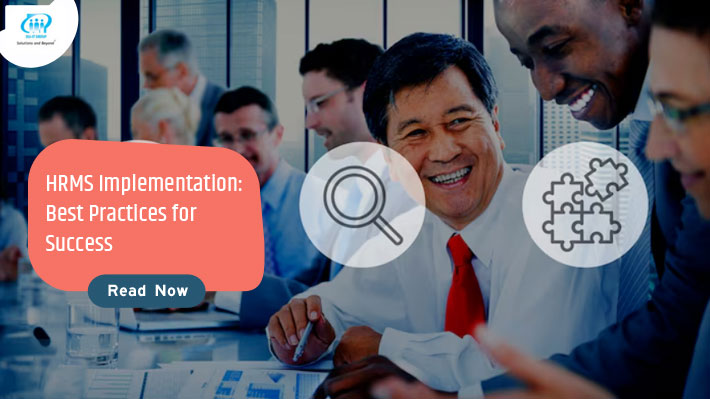Discover key strategies for successful HRMS implementation, including research, planning, software selection, data migration, and change management. Learn how to optimise your HR processes and maximise ROI.
The process of introducing an HRMS is a large feat for any organisation to accomplish at this time. An HRMS consolidates employee information and streamlines the work of HR, such as calculating and distributing salaries, administering benefits, conducting performance evaluations, etc.
When done appropriately, the implementation of an HRMS calls for lower costs and resources in the process while offering enhanced effectiveness. However, many HRMS rollouts need to be premeditated correctly and may end up consuming more than the planned budgets or not achieving the desired results.
This article describes proper procedures to follow to ensure your implementation of the Human Resource Management System is successful.
Research and Planning
There is a need to closely identify your organisation’s requirements and objectives before choosing an appropriate HRMS vendor. Which specific functions would you like to be executed by the social robot? What capabilities are essential? Engage major stakeholders in the initial phases of the change process to ensure they support the project.
Take your time with your switch vendors, form your due diligence, and get an evaluation of the payroll software. Inquire about the compatibility with other software, its capability to expand, and how to set it up to ensure that the system meets the organisation’s needs. Reflectively set realistic goals and objectives on the likely time and costs and also how success will be measured.
Add training time for the practitioners and other support needed after they go live. One needs to be extremely cautious when it comes to making decisions regarding the choice of the provider and planning because hasty actions in this sphere will surely result in unpleasant consequences.
Software Selection
- Determine the needs and wants of the customers and clients. What key functions must your organisation fulfil with the aid of the HRMS? Which of the following capabilities are nice to have, and which should be considered as the key or fundamental? List these before drawing comparisons.
- Research multiple vendors. Seek out products that are similar to what you need, as well as those flexible enough to change with the shifting requirements.
- Identify stakeholders. This section aims at identifying the users and beneficiaries and the various groups of people that will be affected by the new system. Engage them during demos and selection, and allow them to have their say.
- Ask about integration. It is important to be aware of what kind of integration is provided (payroll systems, benefits administration and so on) and how well data can be exchanged between them.
Data Migration
- Sweeping existing data first is a better approach to prevent unnecessary iteration of operations. Ensure that there is only one source of truth to start migrating into the new systems by eliminating duplicates, errors, and outdated information within your existing systems.
- Map data carefully. Ensure that the movement of specific data fields from the old systems to the new human resource management system is well articulated. Validate mapping before migration.
- If required, move in phases while keeping the core infrastructure and essential services at a distance from the merging structures. In case of huge data, it is possible to migrate data in batches and then perform validation on each batch separately.
Rollout & Change Management
- If possible, roll it out slowly and/or start small. It may be more effective to implement the HRMS directly to internal CHRO staff and then to the department heads before the employees.
- It is important to ensure good communication with the targeted audience before, during and after the rollout process. The management should highlight why the system is changing, when the change will occur, the advantages of the change, and the support that will be given to the employees to facilitate the change.
- Provide ongoing support. Ensure that people are put on standby to respond to the questions and issues from the employees as well as to help in the implementation process after the HRMS has been rolled out.
- Continuously gather feedback. Observe emerging concerns, unclear aspects, or training gaps by periodically asking employees for feedback after implementation. Refine your approach accordingly.
Crucial success factors include defining objectives and scope, selecting an appropriate solution, transitioning high-quality data, avoiding over-configuration, grounding end-users, validating with thorough experimentation, and promoting continued adoption across the implementation process.
In Conclusion
The strategic approach that organisations take in implementing their HRMS is crucial as the overall approach defines how organisations prepare themselves for the achievement of the maximum value from their investment. This way, constant user feedback is built into the new HRMS, and any changes are consolidated and ensure that the new system ‘sticks’ and, in the process, enhances the capabilities of the HR department.
